Poor Economics: Rethinking Poverty & The Ways To End It
By
Abhijit V. Banerjee & Esther Duflo
About The Authors
Abhijit Vinayak Banerjee was educated at the University of Calcutta, Jawaharlal Nehru University, and Harvard University. He is currently the Ford Foundation International Professor of Economics at the Massachusetts Institute of Technology. Banerjee is past president of the Bureau for Research in the Economic Analysis of Development, a Research associate of the NBER, a CEPR research fello, International Research Fellow of the Kiel Institute, a fellow of the American Academy of Arts and Sciences and the Econometric Society, and he has been a Guggenheim Fellow and an Alfred P. Sloan Fellow. He is the recipient of many awards, including the inaugural Infosys Prize in 2009, and has been an honorary advisor to many organizations, including the World Bank and the Government of India.
Esther Duflo is Abdul Latif Jameel Professor of Poverty Alleviation and development economics in the Department of Economics at MIT. She was educated at the Ecole Normale Superieure, in Paris, and at MIT. Upon completing her PhD she was appointed assistant professor of economics at MIT, and has been there ever since. She is a fellow of the American Academy of Arts and Sciences and the Econometric Society. She has received numerous honours and prizes, including a John Bates Clark Medal for the best American economist under 40 in 2010, a MacArthur “genius” Fellowship in 2009, and the inaugural Calvo-Armengol International prize in 2010. She was recognized as one of the best young economists by The Economist magazine, one of the 100 most influential thinkers by Foreign Policy since the list has existed (2008, 2009, and 2010), and one of the “forty under forty” most influential business leaders by Fortune magazine in 2010.
In 2003, Banerjee and Duflo cofounded the Abdul Latif Jameel Poverty action Lab (J-PAL), which they have been directing together ever since. J-PAL is a network of affiliated professors in five offices around the world who are united by their use of randomized control trials to answer questions critical to poverty alleviation. J-PAL’s mission is to reduce poverty by ensuring that policy is based on scientific evidence. In 2009 J-PAL won the BBVA “Frontier of Knowledge” Award in the development cooperation category.
Abhijit V. Banerjee and Esther Duflo won the 2019 Nobel Prize in Economics.
Foreword

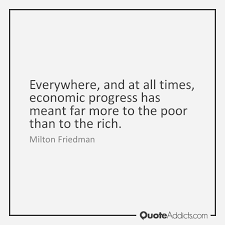 Esther was six when she read in a comic book on Mother Teresa that the city then called Calcutta was so crowded that each person only had 10 square feet to live in. She had a vision of a vast checkerboard of a city, with 3 feet by 3 feet marked out on the ground, each with a human pawn, as it were, huddled into it. She wondered what she could do about it.
Esther was six when she read in a comic book on Mother Teresa that the city then called Calcutta was so crowded that each person only had 10 square feet to live in. She had a vision of a vast checkerboard of a city, with 3 feet by 3 feet marked out on the ground, each with a human pawn, as it were, huddled into it. She wondered what she could do about it.
When she finally visited Calcutta, she was twenty-four and a graduate student at MIT. Looking out of the taxi on her way to the city, she felt vaguely disappointed; everywhere she looked, there was empty space – trees, patches of grass, empty sidewalks. Where was all the misery so vividly depicted in the comic book? Where had all the people gone?
At six, Abhijit knew where the poor lived. They lived in little ramshackle houses behind his home in Calcutta. Their children always seemed to have lots of time to play, and they could beat him at any sport: When he went down to play marbles with them, the marbles would always end up in the pockets of their ragged shorts. He was jealous.
The urge to reduce the poor to a set of clichés has been with us for as long as there has been poverty: The poor appear, in social theory as well as in literature, by turns lazy or enterprising, noble or thievish, angry or passive, helpless or self-sufficient. It is no surprise that the policy stances that correspond to these views of the poor also tend to be captured in simple formulas: ‘Free markets for the poor,” “Make human rights substantial,” Deal with conflict first,” “Give more money to the poorest,” Foreign aid kills development,” and the like. These ideas all have important elements of truth, but they rarely have much space for average poor women or men, with their hopes and doubts, limitations and aspirations, beliefs and confusion. If the poor appear at all, it is usually as the dramatis personae of some uplifting anecdote or tragic episode, to be admired or pitied, but not as a source of knowledge, not as people to be consulted about what they think or want to do.
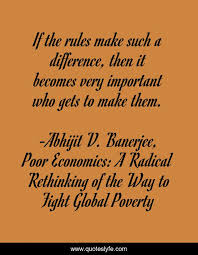
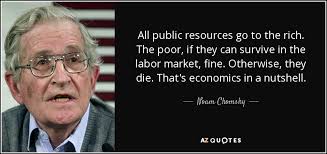 All too often, the economics of poverty gets mistaken for poor economics: Because the poor possess very little, it is assumed that there is nothing interesting about their economic existence. Unfortunately, this misunderstanding severely undermines the fight against global poverty: simple problems beget simple solutions. The field of anti-poverty policy is littered with the detritus of instant miracles that proved less than miraculous. To progress, we have to abandon the habit of reducing the poor to cartoon characters and take the time to really understand their lives, in all their complexity and richness. For the past fifteen years, we have tried to do just that.
All too often, the economics of poverty gets mistaken for poor economics: Because the poor possess very little, it is assumed that there is nothing interesting about their economic existence. Unfortunately, this misunderstanding severely undermines the fight against global poverty: simple problems beget simple solutions. The field of anti-poverty policy is littered with the detritus of instant miracles that proved less than miraculous. To progress, we have to abandon the habit of reducing the poor to cartoon characters and take the time to really understand their lives, in all their complexity and richness. For the past fifteen years, we have tried to do just that.
We are academics, and like most academics we formulate theories and stare at data. But the nature of the work we do has meant that we have also spent months, spread over many years, on the ground working with NGO (non-governmental organization) activists and government bureaucrats, health workers and micro-lenders. This has taken us to the back alleys and villages where the poor live, asking questions, looking for data. This book would not have been written but for the kindness of the people we met there. We were always treated as guests even though more often than not we just walked in. Our questions were answered with patience, even when they made little sense; many stories were shared with us.
Back in our offices, remembering these stories and analyzing the data, we were both fascinated and confused, struggling to fit what we were hearing and seeing into the simple models that (often Western or Western-trained) professional developmental economists and policy makers have traditionally used to think about the lives of the poor. More often than not, the weight of the evidence forced us to reassess or even abandon the theories that we brought with us. But we tried not to do so before we understood exactly why they were failing and how to adapt them to better describe the world. This book comes out of that interchange; it represents our attempt to knit together a coherent story of how poor people live their lives.
Our focus is on the world’s poorest. The average poverty line in the fifty countries where most of the poor live is 16 Indian rupees per person per day. People who live on less than that are considered to be poor by the government of their own countries. At the current exchange rate, 16 rupees corresponds to 36 US cents. But because prices are lower in most developing countries, if the poor actually bought the things they do at U.S. prices, they would need to spend more – 99 cents. So to imagine the lives of the poor, you have to imagine to live in Miami or Modesto with 99 cents per day for almost all your everyday needs (excluding housing), It is not easy, in India, for example, the equivalent amount would buy you fifteen smallish bananas, or about 3 pounds of low-quality rice. Can one live on that? And yet, around the world, in 2005, 865 million people (13 percent of the world’s population) did.

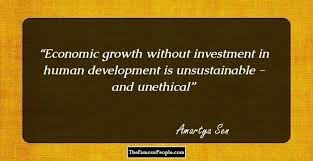 What is striking is that even people who are that poor are just like the rest of us in any way. We have the same desires and weaknesses; the poor are no less rational than anyone else – quite the contrary. Precisely because they have so little, we often find them putting much careful thought into their choices: they have to be sophisticated economists just to survive. Yet our lives are as different as liquor and liquorice. All this has a lot to do with aspects of our own lives that we take for granted and hardly think about.
What is striking is that even people who are that poor are just like the rest of us in any way. We have the same desires and weaknesses; the poor are no less rational than anyone else – quite the contrary. Precisely because they have so little, we often find them putting much careful thought into their choices: they have to be sophisticated economists just to survive. Yet our lives are as different as liquor and liquorice. All this has a lot to do with aspects of our own lives that we take for granted and hardly think about.
Living on 99 cents a day means you have limited access to information – newspapers, television, and books all cost money – and so you often just don’t know certain facts that the rest of the world takes as given, like, for example, that vaccines can stop your child from getting measles. It means living in a world whose institutions are not built for someone like you. Most of the poor do not have a salary, let alone a retirement plans that deducts automatically from it. It means making decisions that come with a lot of small print when you cannot even properly read the large print. What does someone who cannot read make of a health insurance product that doesn’t cover a lot of unpronounceable diseases? It means going to vote when your entire experience of the political system is a lot of promises, not delivered; and not having anywhere safe to keep your money, because what the bank manager can make from your little savings won’t cover his cost of handling it. And so on.
All this implies that making the most of their talent and securing their families future take that much more skill, will power, and commitment for the poor. And conversely, the small costs, the small barriers, and the small mistakes that most of us do not think twice about loom large in their lives.
It is not easy to escape from poverty, but a sense of possibility and a little bit of well-targeted help (a piece of information, a little nudge) can sometimes have surprisingly large effects. On the other hand, misplaced expectations, the lack of faith where it is needed, and seemingly minor hurdles can be devastating. A push on the right lever can make a huge difference, but it is often difficult to know where that lever is. Above all, it is clear that no single lever will solve very problem.
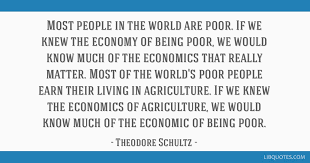
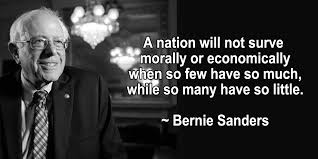 Poor Economics is a book about the very rich economics that emerges from understanding the economic lives of the poor. It is a book about the kind of theories that help us make sense of both what the poor are able to achieve, and where and for what reason they need a push. Each chapter in this book describes a search to discover what these sticking points are, and how they canbe overcome. We open with the essential aspects of people’s family lives: what they buy; what they do about their children’s schooling, their own health, or that of their children or parents; how many children they choose to have; and so on. Then we go on to describe how markets and institutions work for the poor: Can they borrow, save, insure themselves against the risks they face? Throughout, the book returns to the same basic questions. Are there ways for the poor to improve their lives, and what is preventing them from being able to do these things? Is it more the cost of getting started, or is it easy to get started but harder to continue? What makes it costly? Do people sense the nature of the benefits? If not, what makes it hard for them to learn them?
Poor Economics is a book about the very rich economics that emerges from understanding the economic lives of the poor. It is a book about the kind of theories that help us make sense of both what the poor are able to achieve, and where and for what reason they need a push. Each chapter in this book describes a search to discover what these sticking points are, and how they canbe overcome. We open with the essential aspects of people’s family lives: what they buy; what they do about their children’s schooling, their own health, or that of their children or parents; how many children they choose to have; and so on. Then we go on to describe how markets and institutions work for the poor: Can they borrow, save, insure themselves against the risks they face? Throughout, the book returns to the same basic questions. Are there ways for the poor to improve their lives, and what is preventing them from being able to do these things? Is it more the cost of getting started, or is it easy to get started but harder to continue? What makes it costly? Do people sense the nature of the benefits? If not, what makes it hard for them to learn them?
Poor economics is ultimately about what the lives and choices of the poor tell us about how to fight global poverty. It helps us to understand, for example, why microfinance is useful without being the miracle some hoped it would be; why the poor often end up with health care that does them more harm than good; why children of the poor can go to school year after year and not learn anything; why the poor don’t want health insurance. And it reveals why so many magic bullets of yesterday have ended up as today’s failed ideas. The book also tells a lot about where hope lies: Why token subsidies might have more than token effects; how to better market insurance; why less may be more in education; why good jobs matter for growth. Above all, it makes clear why hope is vital and knowledge critical, why we have to keep on trying even when the challenge looks overwhelming. Success isn’t always as far away as it looks.
Low-Hanging Fruit for Better (Global) Health
 Health is an area of great promise but also great frustration. There seems to be plenty of “low hanging fruit” available from vaccines to bed nets, that could save lives at a minimal cost, but all too few people make use of such preventive technologies. Government health workers, who are in charge of delivering basic health-care services in most countries, are often blamed for this failure, not entirely unfairly, as we will see. They, on the other hand, insist that plucking these low-hanging fruits is much harder than it seems.
Health is an area of great promise but also great frustration. There seems to be plenty of “low hanging fruit” available from vaccines to bed nets, that could save lives at a minimal cost, but all too few people make use of such preventive technologies. Government health workers, who are in charge of delivering basic health-care services in most countries, are often blamed for this failure, not entirely unfairly, as we will see. They, on the other hand, insist that plucking these low-hanging fruits is much harder than it seems.
In winter 2005 in the beautiful town of Udaipur in western India, we had an animated discussion with a group of government nurses. They were very upset with us because we were involved in a project that aims to get them to come to work more often. At some point in the proceedings, one of them got so exasperated that she decided to be blunt: The job was essentially pointless anyway, she announced. When a child came to them with diarrhoea, all they could offer the mother was a packet of oral rehydration solution (or ORS, a mixture of salt, sugar, potassium chloride, and an antacid to be mixed with water and drunk by the child). But most mothers didn’t believe that ORS could do any good. They wanted what they thought was the right treatment – an antibiotic or an intravenous drip. Once a mother was sent away from the health centre with just a packet of ORS, the nurses told us, she never came back. Every year they saw scores of children die from diarrhoea, but they felt utterly powerless.
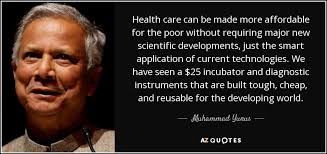 Of the 9 million children who dies before their fifth birthdays each year, the vast majority are poor children from South Asia and sub-Saharan Africa, and roughly one in five dies of diarrhoea. Efforts are underway to develop and distribute a vaccine against rotavirus, the virus responsible for many (though not all) of the cases of diarrhoea. But three “miracle drugs” could already save most of these children: chlorine bleach, for purifying water; and salt and sugar, the key ingredients of the rehydration solution ORS. A mere $100 spent on chlorine packaged for household use can prevent thirty-two cases of diarrhoea. Dehydration is the main proxy of cause of death from diarrhoea, and ORS, whch is close to being free, is a wonderfully effective way to prevent it.
Of the 9 million children who dies before their fifth birthdays each year, the vast majority are poor children from South Asia and sub-Saharan Africa, and roughly one in five dies of diarrhoea. Efforts are underway to develop and distribute a vaccine against rotavirus, the virus responsible for many (though not all) of the cases of diarrhoea. But three “miracle drugs” could already save most of these children: chlorine bleach, for purifying water; and salt and sugar, the key ingredients of the rehydration solution ORS. A mere $100 spent on chlorine packaged for household use can prevent thirty-two cases of diarrhoea. Dehydration is the main proxy of cause of death from diarrhoea, and ORS, whch is close to being free, is a wonderfully effective way to prevent it.
Yet neither chlorine nor ORS is used very much. In Zambia, thanks to the efforts of Population service International (PSI), a large organization that markets it at subsidized prices worldwide, chlorine is cheap and widely available. At the cost of 800 kwachas (0.18 USD PPP) a family of six can buy enough bleach to purify its water supply, avoiding waterborne diarrhoea. But only 10 percent of families use it. In India, according to the United Nations Children’s Fund (UNICEF), only one-third of children under five who had diarrhoea were given ORS. Why are some 1.5 million children dying every year of diarrhoea, a disease that could often be avoided in the first place, and could often be treated with boiled water, sugar and salt?
 Bleach and ORS are not unique examples. There is other relatively “low-hanging fruit” with promise to improve health and save many lives. These are cheap and simple technologies that, if properly utilized, would save much in resources (in terms of extra days worked, less antibiotics used, stronger bodies, and so on). They could pay for themselves, in addition to saving lives. But too many of these fruits are left unpicked. It is not that these people don’t care about their health They just seem to spend money elsewhere: on antibiotics that are not always necessary, on surgery that comes too late to help. Why does it always have to be this way?
Bleach and ORS are not unique examples. There is other relatively “low-hanging fruit” with promise to improve health and save many lives. These are cheap and simple technologies that, if properly utilized, would save much in resources (in terms of extra days worked, less antibiotics used, stronger bodies, and so on). They could pay for themselves, in addition to saving lives. But too many of these fruits are left unpicked. It is not that these people don’t care about their health They just seem to spend money elsewhere: on antibiotics that are not always necessary, on surgery that comes too late to help. Why does it always have to be this way?
The Health Trap
In a village in Indonesia we met Ibu Emptat, the wife of a basket weaver. A few years before our first meeting (in summer 2008), her husband was having trouble with his vision and could no longer work. She had no choice but to borrow money from the local moneylender – 100,000 rupiah ($18.75 USD PPP) to pay for medicine so that her husband could work again, and 300,000 rupiah ($56 USD PPP) for food for the period when her husband was recovering and could not work (three of her seven children were still living with them). They had to pay 10 percent per month in interest on the loan. However, they fell behind on their interest payments and by the time we met, her debt had ballooned to 1 million rupiah ($187 USD PPP); the moneylender was threatening to take everything they had. To make matters worse, one of her younger sons had recently been diagnosed with severe asthma. Because the family was already mired in debt, she couldn’t afford the medicine needed to treat his condition. He sat with us throughout our visit, coughing every few minutes; he was no longer able to attend school regularly. The family seemed to be caught in a classic poverty trap – the father‘s illness made them poor, which is why the child stayed sick, and because he was too sick to get a proper education poverty loomed in his future.
Health certainly has the potential to be a source of a number of different traps. For example, workers living in an insalubrious environment may miss many workdays, children may be sick often and unable to do well in school; mothers who give birth there may have sickly babies. Each of these channels is potentially a mechanism for current misfortunes to turn into future poverty.
 The good news is that if something like this is what is going on, we may only need one push, one generation that gets to grow up and work in a health environment, to set the trap loose. This is Jeffrey Sachs’s view, for example. As he sees it, a large proportion of the world’s poorest people, and indeed entire countries, are stuck in a health-based poverty trap. Malaria is his favourite example: countries in which a large fraction of the population is exposed to malaria are much poorer (on average, countries like Cote d’Ivoire or Zambia, where 50 percent or more of the population is exposed to malaria, have per capita incomes that are one-third of those in the countries where no one gets malaria.) And being so much poorer makes it harder for them to take steps to prevent malaria, which in turn keeps them poor. But this also means, according to Sachs, that public health investments aimed at controlling malaria (such as the distribution of bed nets to keep the mosquitoes at bay during the night) in these countries could have very high returns: People would be less sick less often and able to work harder, and the resulting income gains would easily cover the cost of these interventions and more. To put it in terms of the S-shaped curve in Chapter 1, African countries where malaria is endemic are stuck in the left part of the curve, where their malaria-weakened labor force is too unproductive and hence too poor to be able to pay for malaria eradication. But if someone did them the favour of financing malaria eradication, they would end up on the right part of the curve, on the road to prosperity. The same argument could be made about other diseases that are prevalent in poor countries. This is the core of the optimistic massage of Sachs’s book The End of Poverty.
The good news is that if something like this is what is going on, we may only need one push, one generation that gets to grow up and work in a health environment, to set the trap loose. This is Jeffrey Sachs’s view, for example. As he sees it, a large proportion of the world’s poorest people, and indeed entire countries, are stuck in a health-based poverty trap. Malaria is his favourite example: countries in which a large fraction of the population is exposed to malaria are much poorer (on average, countries like Cote d’Ivoire or Zambia, where 50 percent or more of the population is exposed to malaria, have per capita incomes that are one-third of those in the countries where no one gets malaria.) And being so much poorer makes it harder for them to take steps to prevent malaria, which in turn keeps them poor. But this also means, according to Sachs, that public health investments aimed at controlling malaria (such as the distribution of bed nets to keep the mosquitoes at bay during the night) in these countries could have very high returns: People would be less sick less often and able to work harder, and the resulting income gains would easily cover the cost of these interventions and more. To put it in terms of the S-shaped curve in Chapter 1, African countries where malaria is endemic are stuck in the left part of the curve, where their malaria-weakened labor force is too unproductive and hence too poor to be able to pay for malaria eradication. But if someone did them the favour of financing malaria eradication, they would end up on the right part of the curve, on the road to prosperity. The same argument could be made about other diseases that are prevalent in poor countries. This is the core of the optimistic massage of Sachs’s book The End of Poverty.
Sceptics have been quick to point out that it is not clear whether malaria-infested countries are poor because of malaria, as Sachs assume, or perhaps their inability to eradicate malaria is an indicator of the fact that they are poorly governed. If it is the latter, then the mere eradication of malaria may achieve very little, as long as governance remains weak.
Whose story – the activists’ or the sceptics’ – does the evidence support? Successful campaigns to eradicate malaria have been studied in a number of different countries. Each of these studies compares high-malaria-prevalence regions and checks what happens to children born in these areas before and after the campaign. They all find that life outcomes (such as education and earnings) of children born after the campaign in areas where malaria was once prevalent catch up with htose of those with children born in low-incidence areas. This strongly suggests that eradicating malaria indeed results in a reduction in long-term poverty, although the effects are not nearly as those suggested by Jeffrey Sachs: One study on malaria eradication in the U.S. south (which had malaria until 1951) and several countries in Latin America suggests that a child who grew up malaria-free earns 50 percent more per year, for his entire adult life, compared to a child who got the disease. Qualitatively similar results were found in India, Paraguay and Sri Lanka, although the magnitude of the gain varies from country to country.
 This result suggests that the financial return to investing in malaria prevention can be fantastically high. A long-lasting insecticide-treated bed net costs at the most $14 USD PPP in Kenya, and lasts about 5 tears. Assume conservatively that a child in Kenya sleeping under a treated net has 30 percent less risk of being infected with malaria between birth and age two, compared to a child who doesn’t. In Kenya, an adult makes on an average $590 USD PPP a year. Thus, if malaria indeed reduces earnings in Kenya by 50 percent, a $14 investment will increase incomes by $295 for the 30 percent of the population that would have gotten malaria without the net. The average return is $88 every year over the child’s entire adult work life – enough for a parent to buy a lifetime supply of bed nets for all his or her children, with a chunk of change left over.
This result suggests that the financial return to investing in malaria prevention can be fantastically high. A long-lasting insecticide-treated bed net costs at the most $14 USD PPP in Kenya, and lasts about 5 tears. Assume conservatively that a child in Kenya sleeping under a treated net has 30 percent less risk of being infected with malaria between birth and age two, compared to a child who doesn’t. In Kenya, an adult makes on an average $590 USD PPP a year. Thus, if malaria indeed reduces earnings in Kenya by 50 percent, a $14 investment will increase incomes by $295 for the 30 percent of the population that would have gotten malaria without the net. The average return is $88 every year over the child’s entire adult work life – enough for a parent to buy a lifetime supply of bed nets for all his or her children, with a chunk of change left over.
There are other examples of highly effective health investments. Access to clean water and sanitation is one of them. Overall, in 2008, according to estimates by WHO and UNICEF, approximately 13 percent of the world’s population lacked access to improved water sources (typically meaning a tap or well) and about one-fourth did not have access to water that is asfe to drink. And many of the people are the very poor. In our eighteen country data set, access to tap water at home among the rural extremely poor varied from less than 1 percent (in rural Rajasthan and Uttar Pradesh in India) to 36.8 percent (in Guatemala). The numbers tended to be much better for richer households, although they vary a lot from country to country (from less than 3.2 percent in Papua New Guinea to 80 percent in Brazil, for the rural middle class). They are higher in urban areas, both for the poor and the middle class. Decent sanitation facilities are even rarer among the poor – 42 percent of the world’s population live without a toilet at home.
Most experts agree that access to piped water and sanitation can have a dramatic impact on health. A study concluded that the introduction of piped water, better sanitation, and chlorination of water sources was responsible for something like three-fourths of the decline in infant mortality between 1900 and 1946 and nearly half the overall reduction in mortality over the same period. Moreover, repeated bouts of diarrhoea during childhood permanently impair both physical and cognitive development. It is estimated that by piping uncontaminated, chlorinated water to households, it is possible to reduce diarrhoea by up to 90 percent. Poor water quality and pools of stagnant water are also a cause of other major illnesses, including malaria, schistosomiasis, and trachoma, any of which can kill children or make them less productive adults.
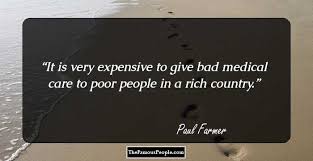 Nevertheless, the conventional wisdom is that today, at $20 per household per month, providing piped water and sanitation is too expensive for the budget of most developing countries. The experience of Gram Vikas, an NGO that works in Orissa, India, shows, however, that it is possible to do it much more cheaply. It’s CEO, Joe Madiath, a man with a self-deprecating sense of humour who attends the annual meeting of the world’s rich and powerful at the World Economic Forum in Davos, Switzerland, in outfits made from homespun cotton, is used to doing things differently. Madiath’s career as an activist started early: he was twelve when he first got into trouble – for organizing the labour on the plantation his father owned. He came to Orissa in the early 1970s with a group of left-wing students to help out after a devastating cyclone. After the immediate relief work was over, he decided to stay and see if he could find some more permanent ways to help the poor Oriya villagers. He eventually settled on water and sanitation. What attracted him to the issue was that it was simultaneously a daily challenge and an opportunity to initiate long-term social change. He explained to us that in Orissa, water and sanitation are social issues. Madiath insists that very single household in the households where Gram Vikas operates should be connected to the same water mains: Water is piped to each house, which contains a toilet, a tap and a bathing room, all connected to the same system. For the high-caste households, this means sharing water with low-caste households, which, for many in Orissa, was unacceptable when first proposed. It takes the NGO a while to get the agreement of the whole village and some villages eventually refuse, but it has always stuck to the principle that it would not start its work in a village until everyone there agreed to participate. When agreement is finally reached, it is often the first time that some of the upper-caste households participate in a project that involves the rest of the community.
Nevertheless, the conventional wisdom is that today, at $20 per household per month, providing piped water and sanitation is too expensive for the budget of most developing countries. The experience of Gram Vikas, an NGO that works in Orissa, India, shows, however, that it is possible to do it much more cheaply. It’s CEO, Joe Madiath, a man with a self-deprecating sense of humour who attends the annual meeting of the world’s rich and powerful at the World Economic Forum in Davos, Switzerland, in outfits made from homespun cotton, is used to doing things differently. Madiath’s career as an activist started early: he was twelve when he first got into trouble – for organizing the labour on the plantation his father owned. He came to Orissa in the early 1970s with a group of left-wing students to help out after a devastating cyclone. After the immediate relief work was over, he decided to stay and see if he could find some more permanent ways to help the poor Oriya villagers. He eventually settled on water and sanitation. What attracted him to the issue was that it was simultaneously a daily challenge and an opportunity to initiate long-term social change. He explained to us that in Orissa, water and sanitation are social issues. Madiath insists that very single household in the households where Gram Vikas operates should be connected to the same water mains: Water is piped to each house, which contains a toilet, a tap and a bathing room, all connected to the same system. For the high-caste households, this means sharing water with low-caste households, which, for many in Orissa, was unacceptable when first proposed. It takes the NGO a while to get the agreement of the whole village and some villages eventually refuse, but it has always stuck to the principle that it would not start its work in a village until everyone there agreed to participate. When agreement is finally reached, it is often the first time that some of the upper-caste households participate in a project that involves the rest of the community.
Once a village agrees to work with Gram Vikas, the building work starts and continues for one to two years. Only after very single house has received it’s tap and toilet is the system turned on. In the meantime, Gram Vikas collects data every month on who has gone to the health centre to get treated for malaria or diarrhoea. We can thus directly observe what happens in a village as soon as the water starts flowing. The effects are remarkable: Almost overnight, and for years into the future, the number of severe diarrhoea cases falls by one-half, and the number of malaria cases falls by one-third. The monthly cost of the system for each household, including maintenance, is 190 rupees, or $4 per household (in current USD), only 20 percent of what is conventionally assumed to be the cost of such a system.
There are even cheaper ways to avert diarrhoea, such as adding chlorine to water. Other very inexpensive medical or public health technologies with proven effectiveness include ORS, getting children immunized, de-worming drugs, extensive breast-feeding until six months, and some routine antenatal procedures such as a tetanus shot for the would-be mother. Vitamin A against night-blindness, iron pills and iron-fortified flour against anaemia, and so on are other examples of low-hanging fruit.
 The existence of these technologies is the source of both Jeffrey Sachs’s optimism and his impatience. As he sees it, there are health-based poverty traps, but there are also ladders we can give to the poor to help them escape from these traps. If the poor cannot afford these ladders, the rest of the world should help them out. This is what Gram Vikas does in Orissa, by helping to organize the villages, and by subsidizing the cost of the water systems. A few years ago, Joe Madiath told us he felt he had to turn down funding from the Bill & Melinda Gates Foundation when the grant officer insisted that the villagers should pay the full cost of what they were getting (fortunately, the foundation subsequently changed its view on the question). He argued that the villagers simply cannot afford 190 rupees per month, even though it is true that the health benefits are potentially worth far more – Gram Vikas only asks villagers to pay enough money into a village fund to be able to keep the system in good repair and be able to add new households as the village grows. The rest the NGO raises from donors all over the world. In Sachs’s view, this is how things should be.
The existence of these technologies is the source of both Jeffrey Sachs’s optimism and his impatience. As he sees it, there are health-based poverty traps, but there are also ladders we can give to the poor to help them escape from these traps. If the poor cannot afford these ladders, the rest of the world should help them out. This is what Gram Vikas does in Orissa, by helping to organize the villages, and by subsidizing the cost of the water systems. A few years ago, Joe Madiath told us he felt he had to turn down funding from the Bill & Melinda Gates Foundation when the grant officer insisted that the villagers should pay the full cost of what they were getting (fortunately, the foundation subsequently changed its view on the question). He argued that the villagers simply cannot afford 190 rupees per month, even though it is true that the health benefits are potentially worth far more – Gram Vikas only asks villagers to pay enough money into a village fund to be able to keep the system in good repair and be able to add new households as the village grows. The rest the NGO raises from donors all over the world. In Sachs’s view, this is how things should be.
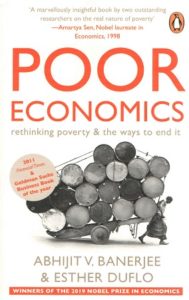

0 thoughts on “Poor Economics: Rethinking Poverty & The Ways To End It”